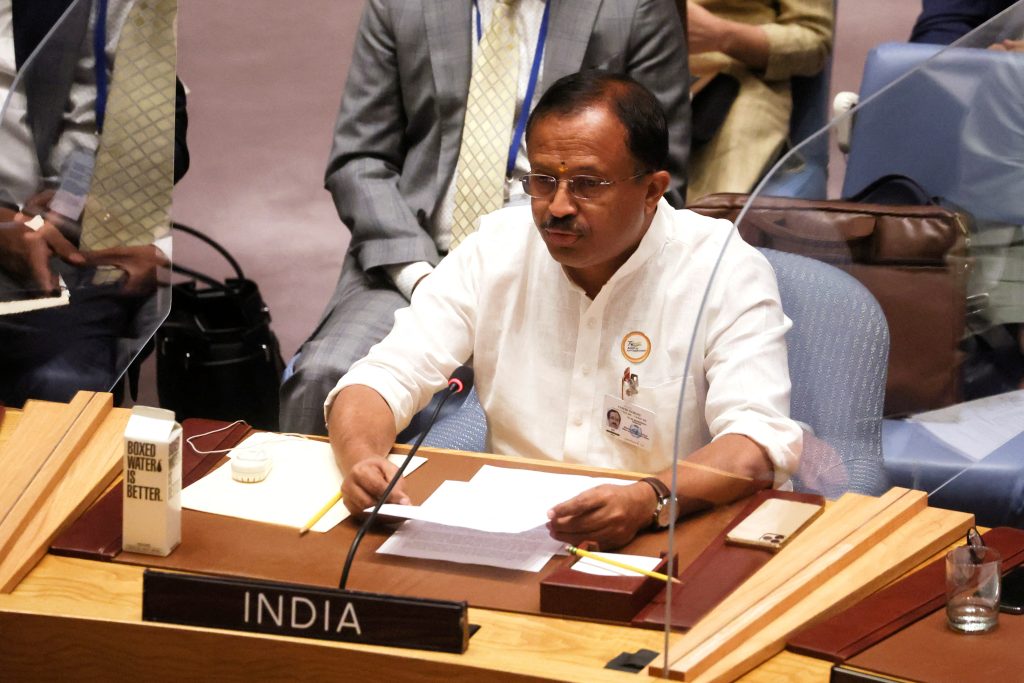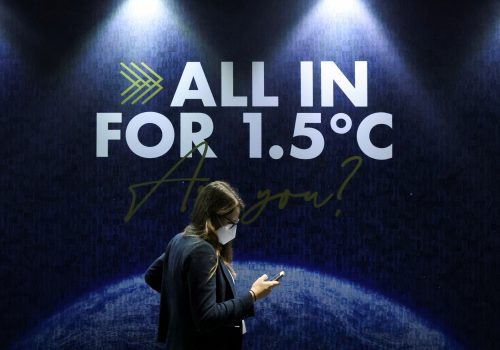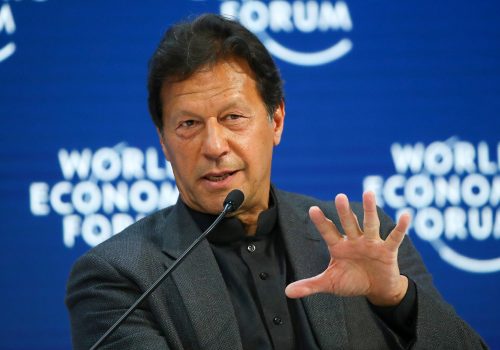India’s diplomatic response to the Ukraine-Russia war has become an enigma and a topic of global interest.
Delhi continues to hold a position that experts describe as “maintaining strategic autonomy,” meaning that India refuses to side with the West, chiefly the United States and its NATO allies. While it is part of Western alliances such as the Quadrilateral Security Dialogue, it continues to buy weapons and oil from Russia. India abstained from several votes in the United Nations Security Council and General Assembly on the issue of censuring Russia for its unprovoked attack on Ukraine. It has also abstained from resolutions brought in by the Russian side. Until now, India has walked a fine line, trying to balance its relationship with the West and with Russia, with whom it has deep historical and strategic ties.
Self-reliance amidst the Ukraine crisis and exploitation by Big Tech
Another interesting but less talked about response from India is what the country is doing to further its Atmanirbhar Bharat (“Self-Reliant”) India in the aftermath of the Ukraine crisis.
India’s State Minister for Electronics and Information Technology Rajeev Chandrashekhar recently accused Big Tech of “weaponizing internet and presiding over splinternet” amidst the Ukrainian crisis. This comes after Big Tech firms like Google Pay, Apple Pay, and Mastercard pulled out of Russia amidst the Ukraine crisis, and the country’s banks were cut off from the SWIFT international payments system. His remarks point toward India doubling down on its Atmanirbhar Bharat agenda in the aftermath of the crisis. Indian Prime Minister Narendra Modi has also stressed the importance of self-reliance while talking about the war between the two countries. The question is, can India pursue an all-out self-reliance campaign in this new geopolitical reality?
Before answering this question, it is critical to understand the context and objectives of India’s self-reliance push. Modi gave a clarion call for Atmanirbhar Bharat while announcing his government’s economic support package during the first year of the pandemic. The push for this campaign came due to severed global supply chains and the need to reduce India’s dependence on other countries for critical goods. It must be clarified, however, that self-reliance does not mean self-sufficiency. Delhi wants India to be self-reliant, specifically to be protected from external shocks in sectors of strategic importance, but it does not wish to cordon itself off from the world. Doing so in a globally connected economy that thrives on competitive advantages that would be an impossible task. This campaign has thus resulted in several reforms and policies to reduce import dependence. Key to this has been India’s push for making domestic manufacturing viable and attractive for global companies through the production-linked incentive (PLI) schemes and public procurement orders that promote buying goods with more domestic content, similar to Biden’s “Buy American” program.
While Modi created the slogan in 2020, the self-reliance agenda has been afoot in India for some time now, especially in the information technology sector.
India successfully rolled out Aadhaar, the world’s largest biometric identification system. Built on the success of Aadhar, India Stack and its applications such as the Unified Payments Interface and electronic Know-Your-Customer platforms have fundamentally transformed sectors in India. As Russian banks were cut off from SWIFT and tech companies pulled out of the country following Moscow’s invasion of Ukraine, Indian experts pointed out how India Stack ensured that India would never fall prey to any blackmail by global tech companies. This sentiment was repeated by Rajeev Chandrashekhar when he said it was due to the focus of the government’s self-reliance that the country now had alternatives to these global arrangements if India ever found itself in a similar position. While it is impossible to think India might find itself in a position similar to Russia (i.e., a social pariah on the global stage), Delhi wishes to avoid subservience to global technology companies.
On the one hand, it is building local capabilities, and on the other hand, it has been making regulations stringent for global companies to protect against adverse actions. The government believes that foreign tech companies have disproportionately benefited from data gathered in India primarily because of India’s lack of tech regulations. This is particularly true for e-commerce, social media, and payment gateway companies, as Delhi believes that they have abused the light-touch rules of the Indian market. Consequently, India has seen a complete overhaul of regulations for e-commerce, social media, and payment gateways in the past three to four years.
Additionally, India has been working on a comprehensive data protection regime and a framework to unlock economic potential for “non-personal” data. In a recently announced policy, Delhi revised requirements for cyber incident reporting. These impose compliance requirements such as mandatory incident reporting within stipulated time frames, data storage, and appointment of designated point of contacts. This is being seen as a fresh attempt at exercising greater control over tech companies operating in the country.
Essential to these policies is India’s push for data localization, mandating global companies to store the data of Indian citizens in India and establishing a local presence through the appointment of nodal officers and chief compliance officers. India has always felt threatened by a potential pullout of global tech companies in case of a geopolitical crisis or an adverse policy decision.
Senior government officials cited technology companies pulling out of countries at the behest of the US government in public and private discussions. Whether there is any truth to these allegations is besides the point, however. In the aftermath of the Ukraine crisis, India’s threat perception around these issues is set to skyrocket.
This is evident from Chandrashekhar’s statements: “The use of sanctions to cut off access to the internet is disturbing. It is quite a troubling precedent. These recent events strengthen India’s case for data localization, national champions, resilient internet network architecture, native open APIs (application programming interface), and a strong cyber security command center.” If the minister’s words are any indication, self-reliance will only become a more prominent feature of India’s technology ambitions. Delhi will likely resist any challenges to its digital economy regulations by the US government (as a part of Trade Policy Forum Discussions) or by other countries with whom the country is negotiating trade deals. Companies and governments must embrace a more emboldened Indian government on the self-reliance front.
While self-reliance will become a more central goal of technology policies and regulations, things are more complicated for other sectors, such as defense, energy, and food, seeing as these sectors are impacted by the war in Ukraine. India’s position thus varies depending on its strategic, economic, and security interests.
Delhi is too reliant on Moscow’s security umbrella
India’s dependence on Russia for defense is well documented, and represents the primary reason for its evergreen response to the Ukraine crisis. Over 70 percent of India’s defense inventory is attributed to Russia. For Moscow, Delhi is its largest importer of arms, and for India, Russia is the largest exporter when it comes to arms transfer. Between 2000 and 2020, Russia accounted for 66.5 percent of India’s arms imports. Of the $53.85 billion spent by India during that period on arms imports, $35.82 billion went to Russia. During the same period, imports from the United States were worth $4.4 billion, and from Israel $4.1 billion. In light of India’s overdependence on Russia, Minister for Commerce and Industry Piyush Goyal has called upon India’s start-ups to become self-reliant in energy and defense.
While there has been a systematic effort to reduce dependence on Russia in the past decade, it is unlikely that this will happen anytime soon. It is even more unlikely that India can genuinely become self-reliant in the security arena, seeing as it doesn’t have the technological capability to do so. Hence, Minister Goyal’s remarks are only aspirational with no near-term material implications.
However, global scrutiny on India and the subsequent focus on the India-Russia relationship for defense should give Washington and allies an opportunity to help the country reduce dependence on Russia, provided they are willing to do so. The Russian tilt of India’s foreign policy is essential for its strategic security due to being surrounded by hostile neighbors Pakistan and China. Given these factors, the United States and allies cannot expect India to simply cease this tilt toward Moscow. India may not become self-reliant in defense, but there could be an opportunity for the West to help it not be “Russia-reliant.” Until this happens, India has no other option but to continue to rely on Moscow’s defense support, particularly since the Biden administration still has yet to sign off on exemptions from Countering America’s Adversaries Through Sanctions Act (CAATSA) sanctions due to India’s purchase of the Russian S-400 missile defense system.
Reportedly, the United States is considering offering five hundred million dollars to India in military aid to reduce dependence on Russia. In addition, in his most recent visit to Europe, Prime Minister Modi held discussions with French President Emmanuel Macron on expanding defense partnerships. These announcements suggest that, though Delhi’s tilt towards Moscow remains fundamentally unchallenged, Washington and allies are still paying heed to India’s unique situation.
India’s energy needs are not black-and-white
When it comes to energy, India’s actions since the war broke out have been even more intriguing. As the European Union (EU) is deliberating on reducing dependence on Russian oil and gas, India is stepping up its purchase of Russian oil at discounted prices. This is in defiance of US pressure, which seeks to isolate Russia economically and financially. Reportedly, India has already bought at least thirteen million barrels in the month following Russia’s invasion of Ukraine, compared with some sixteen million barrels for the entirety of 2021.
Washington was not pleased.
In April, US Deputy National Security Advisor Daleep Singh outlined that while current sanctions by the United States or its allies did not cover energy imports from Russia, the Biden administration was not in favor of an acceleration of India’s energy imports from Russia or trade in non-Western currencies, for they will help in resurrecting the value of the ruble which has sunk since the outbreak of the war. Despite this, it is unlikely that India will relent to pressure from the United States and allies in the short term, especially since latest data indicates that Russia is now India’s fourth largest oil supplier.
India imports 80 percent of its crude oil requirements. Oil is not only a critical factor for the health of the its economy but also key to India’s domestic politics, as rising oil prices are a major political issue. India’s economy is still in recovery mode from the pandemic, and increasing oil prices could have a devastating effect on the country’s economy, its already large deficit, and rising inflation that can halt economic recovery. Growth estimates have already seen a revision due to the economic implications of the Russian war in Ukraine.
Buying discounted Russian oil is almost necessary for a country looking to bring its economy back on track. India defended this decision fervently while pointing out the seeming hypocrisy in the West’s pressure on India when the EU continues to be reliant on Russian gas. While addressing a press conference during the India-United States 2+2 dialogue, Indian External Affairs Minister S. Jaishankar remarked that his country’s total purchase of Russian oil in a month is less than what Europe buys in an afternoon. Aside from oil, this crisis would come as a further wakeup call to India to continue its efforts to increase renewable energy generation and adoption of electric vehicles–essential for energy security and the self-reliance push. In the case of energy and defense, India’s Atmanirbhar Bharat agenda takes an added dimension of self-interest in addition to self-reliance.
The message from India is clear: it will put its energy security, economic well-being, and defense interests above the wishes of the United States and its allies regarding Ukraine. During a visit to India, Russian Foreign Minister Sergey Lavrov said that his country was willing to supply anything India wanted to buy, and the two countries would use a rupee-ruble mechanism for trade oil. His visit indicated that Russia desires Indian support as it deals with global sanctions.
That said, the situation is not without nuance. As before, India still holds on to its strategically autonomous position. While Modi met with Lavrov, his office said that he reiterated to the Russian minister his call for an early cessation of violence and conveyed India’s readiness to contribute to the peace efforts in any way.
India is walking a diplomatic tightrope on the Ukraine crisis, and this comes into particular focus when one remembers how non-alignment has been a key part of India’s diplomatic history. However, the current crisis shows India’s mult-alignment approach where it is able to maintain strategic autonomy over its decisions and prioritize its own interests. It is a credit to Indian diplomats and foreign policy leaders who have been able to convey this position successfully to all sides with sufficient success. However, as the war drags on, India’s position will face renewed pressure from the United States and its allies.
The Ukraine crisis’ impact on global food security will hit India, hard
Lastly, the war is likely to have a catastrophic impact on global food security. Russia and Ukraine are among the largest global producers of wheat, oilseed, and other agri-commodities such as fertilizers. The effect of the crisis will be felt across the globe with disrupted supply chains and increased food prices. The EU is likely to face the maximum impact. Russia is also a significant oil and gas exporter to the EU and other parts of the world, and gas is a necessary raw material for fertilizer production, thus increasing the overall cost for large-scale food production in Europe and other parts of the world dependent on Russian natural gas.
India is likely to face the brunt of rising oilseed prices and disrupted supply chains. It imports 2.5 million tons of sunflower oil annually, of which 70 percent comes from Ukraine, 20 percent from Russia, and 10 percent from Argentina. Since Indian dependence on edible oil imports is around 60 percent (of total consumption), the government will be forced to explore all possible options to maintain domestic supply and keep prices stable.
India has been pushing to reduce import dependence on oilseeds for several years. The government launched the National Food Security Mission – Oilseeds and the National Mission on Edible Oils-Oil Palm to augment the availability of edible oil in the country. The Russia-Ukraine crisis is likely to see India ramp up these efforts further–food inflation is a sensitive political issue, and the government will want to protect itself from negative political attention. India has placed an embargo on all wheat exports from the country due to rising domestic pressures after initially agreeing to fill the gap in the international wheat market created by the crisis.
The crisis in Russia has inadvertently brought India under increased global scrutiny. As its diplomatic response faces criticism, Delhi’s economic response–especially its push for self-reliance–may see further scrutiny despite signing and seeking free trade agreements with major trading partners such as the United Arab Emirates, Australia, and Great Britain. The Biden administration has warned that it is not in India’s interest to “accelerate or increase” imports of Russian energy and other commodities and further offered to work with the country to help reduce its reliance on Moscow. However, India’s position is driven by its own interests–primarily economic and security concerns.
It is unlikely that Delhi will relent on its position despite international pressure, at least not in the short term. As such, India’s foreign policy and relationships with influential global actors such as the United States and Russia will continue to be complex and multilayered, reflective of its economic and security interests.
Adnan Ahmad Ansari is a non-resident senior fellow with the South Asia Center. He has an educational background in engineering and liberal arts. He is currently an Associate Vice President at 9.9 Insights, a Policy, and Strategic Advisory firm based out of New Delhi, India. Views are his personal.

The South Asia Center (SAC) is the hub for the Atlantic Council’s analysis of the political, social, geographical, and cultural diversity of the region.
At the intersection of South Asia and its geopolitics, SAC cultivates dialogue to shape policy and forge ties between the region and the global community.
Related content
Image: India’s Minister of State for External Affairs V. Muraleedharan speaks to a United Nations Security Council meeting on food insecurity and conflict at U.N. headquarters in New York City, New York, U.S., May 19, 2022. REUTERS/Shannon Stapleton



